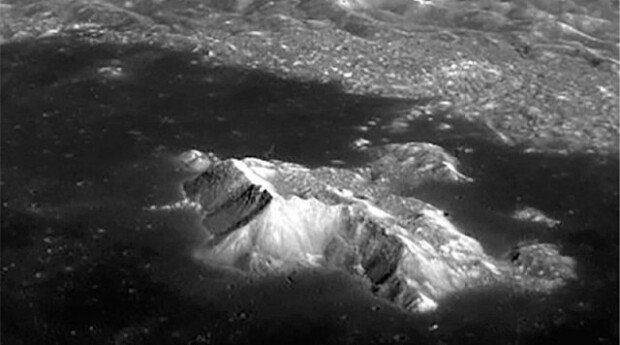S. Korea lunar orbiter Danuri captures back side of moon
S. Korea lunar orbiter Danuri captures back side of moon
Posted April. 13, 2023 08:02,
Updated April. 13, 2023 08:02


The pictures of the moon's back side captured by South Korean lunar orbiter Danuri were revealed. This was the first time the orbiter took pictures of the moon's far side.
On Wednesday, the Ministry of Science and ICT and the Korea Aerospace Research Institute revealed high-resolution pictures of the far side of the moon taken by Danuri. The revealed pictures were taken on March 22 and 24. March 24 is the date when the orbiter completed 1,000 revolutions around the moon.
The regions captured by Danuri are the Tsiolkovskiy crater, the Vallis Schrodinger valley, and the Szilard crater. The landscape of the moon, including valleys and craters, is clearly shown over a radius of 130 to 220 kilometers.
The Tsiolkovskiy crater was named after Konstantin Tsiolkovsky, a Russian physicist who pioneered space travel research. The pictures of the crater revealed on Wednesday feature a peak on the crater created by volcanic activities or meteorite impacts. The Vallis Schrodinger valley near the moon's south pole is distinctively shaped with a 320-kilometer valley around a large crater. It is suspected that a group of small meteorites created such a shape made a series of collisions.
The Szilard crater, with a diameter of 23 kilometers at 31 degrees north latitude, was named after Leo Szilard, who theorized nuclear chain reaction during World War II. The pictures taken by Danuri reveal that the pre-existing crater changed its shape due to follow-up impacts.
The Ministry of Science and ICT and the Korea Astronomy and Space Science Institute also revealed on Wednesday pictures taken by a wide-angle polarimetric camera containing detailed information about the moon’s surface. The camera utilized the nature of polarized light, which travels in a single direction, unlike the other lights that travel in multiple directions. By utilizing different polarizing, various images can be obtained depending on the size and composition of particles, even if they are taken for the same location. As a result, the types of particles present on the moon's surface can be identified.
Danuri also took pictures of the Bachmann crater, which is named after German astronomer Moritz Bachmann, in six different channels with different types of polarizing filters. The Ministry of Science and ICT will reveal a polarimetric map of the front side of the moon for the first time in the world starting in January by combining these observational data.
The ministry will also continue to publish materials observed by Danuri through its website, and launched a service to check the orbiter’s real-time location in the moon’s orbit on Wednesday.
forward@donga.com







